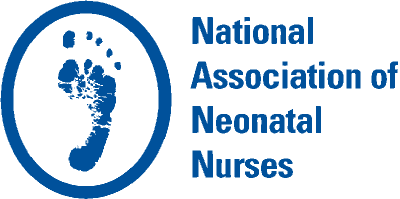Special Interest Group Update
In each issue, one of NANN’s special interest groups will share information in their area of focus.
Imperforate Anus in an Early-Term Newborn
Julie Williams, DNP NNP-BC CRNP
Presentation
An early-term male neonate was delivered to an 18-year-old primigravida at 37.3 weeks gestation via vaginal delivery after induction of labor for maternal cholestasis. Maternal prenatal labs were unremarkable except for a Group B Strep-positive status, for which she received three doses of penicillin prior to delivery. Pregnancy history was significant for maternal cholestasis, and her only medication was prenatal vitamins. Rupture of membrane occurred 8 hours prior to delivery. The infant received routine resuscitation in the delivery room, and Apgar scores were 8 and 9 at 1 and 5 minutes, respectively. The infant was transferred to the newborn nursery for routine newborn care but was noted upon exam to have an imperforate anus. At that time, the infant was made NPO, a Replogle tube was placed, a blood culture was performed, and ampicillin and gentamicin were started prior to transporting the newborn to a Level IV NICU for further evaluation.
Examination and Assessment
On the patient's arrival in the NICU, a thorough examination was conducted. A 2-mm opening over the sacrum was detected in addition to the imperforate anus. Given the anomalies, a full genetic evaluation was pursued.
The following findings were noted
- Labs: complete blood count, C-reactive protein, and electrolytes were within normal limits
- Chest and abdominal radiographs: within normal limits
- Echocardiogram: within normal limits, no structural defects
- Abdominal ultrasound: mild right renal pelviectasis, no frank hydronephrosis, small amount of abdominopelvic fluid
- Spine ultrasound: evidence of an open neural tube defect with divergent posterior elements and extension of fluid and soft tissue density likely neural elements were noted; differential in favor of myelomeningocele versus meningocele
- Head ultrasound: within normal limits
- Brain MRI: within normal limits, no evidence of Chiari malformation
- Spine MRI: no evidence of a neural tube defect
- Genetic eye exam: within normal limits
- Hearing: passed bilaterally.
Diagnosis and Management
Imperforate anus, also known as anorectal malformation, has an occurrence of 1 in 4,000–5,000 newborns and occurs more frequently in males than females (Dingeldein, 2020). The defect can range from mild (e.g., an anteriorly displaced anus) to severe (e.g., cloaca).
The etiology of the defect is a failure of differentiation from the urogenital sinus and the cloaca during embryologic development (Verklan & Walden, 2021). Anorectal malformations are classified according to the level of the defect in relation to the pubococcygeal line (a line drawn from the symphysis pubis to the coccyx). High defects are more common and associated with rectourinary and rectovaginal fistulas. High defects also are associated with a lack of innervation of the bowel and bladder (Verklan & Walden, 2021). Low defects are commonly associated with a perineal fistula.
More than 80% of male infants with imperforate anus have a fistula between the rectum and the urinary tract (Dingeldein, 2020). Of the various types of defects, the most common type in males is an imperforate anus with a rectourethral fistula. In females, the most common defect type is a rectovestibular fistula. In 5% of the infants with an imperforate anus, there is no fistula; generally, this defect is associated with Down syndrome (Levitt & Pena, 2015).
Vertebral, genitourinary, cardiovascular, and gastrointestinal defects commonly are associated with anorectal malformations. Tethered cord is common in as many as 25% of infants with anorectal malformations (Dingeldein, 2020). Genitourinary defects are present 20%–50% of the time (Dingeldein, 2020). The higher the malformation, the more likely it is that there will be a urological abnormality. Esophageal atresia and cardiac anomalies (e.g., Tetralogy of Fallot, ventricular septal defect, or patent ductus arteriosus) are less frequent (Dingeldein, 2020). Urological complications, including hydronephrosis, urosepsis, and metabolic acidosis from poor renal function, are the primary sources of mortality and morbidity in infants with anorectal malformations (Dingeldein, 2020).
The initial physical assessment, which is essential in the determination of the plan and urgency of intervention, should be completed within the first 24 hours of life. Two main questions should be answered:
- Will there be a placement of a temporary colostomy or a definitive repair?
- Are there other associated defects in need of urgent treatment?
Imperforate anus is not a surgical emergency; therefore, a thorough evaluation of the baby and discussion with the family should be conducted. The infant should be provided with intravenous fluids, a nasogastric tube or Replogle tube, and antibiotics. Diagnostic evaluations should occur, including abdominal ultrasound, a radiograph of the spine, anteroposterior and lateral radiographs of the sacrum, and cardiac evaluation.
In many cases, a physical exam can support the surgical path. In males, a perineal fistula is indicated by the presence of a well-developed midline groove between the buttocks, a prominent anal dimple, and meconium from an orifice anterior to the sphincter in the midline perineum. Sometimes, there is a protruding skin ridge that an instrument can be passed beneath (called a "bucket handle") or a midline raphe "black ribbon" of subepithelial meconium. These defects do not require a colostomy. The presence of stool in the urine and no evidence of a perineal opening is indicative of a rectourethral fistula; these defects generally require a colostomy.
In females, the presence of a single perineal opening with a normally located urethra is indicative of a cloaca and the need for a colostomy. An opening within the vestibule of the female genitalia but outside the hymen with a normal urethra indicates a rectovestibular fistula. Treatment of this defect can be temporary dilation of the fistula with definitive surgery later or immediate repair of the defect. A fistula located anterior to the center of the sphincter but posterior to the vestibule of the genitalia indicates a perineal fistula; in this case, treatment is a primary anoplasty without a colostomy.
A colostomy relieves the bowel obstruction caused by the imperforate anus. It also provides time for the medical team to plan for the definitive treatment and address other defects and for the family to adjust to and plan for the medical treatments their child will need. The goal of the definitive repair is to place a neoanus in the correct anatomical position. Depending on the defect, some infants may require a colostomy in addition to the neoanus until anal dilation is complete. The surgery is called a posterior sagittal anorectoplasty (PSARP), also known as a "pull-through procedure," indicating the route taken for repair. Other surgical approaches include a combined abdominal and posterior sagittal approach and a laparoscopic/ transanal approach.
The procedure performed determines appropriate postsurgical care. Postcolostomy, the infant is placed on antibiotics, and feeding is resumed after the colostomy is productive. When an infant who has undergone a definitive repair, anal dilation usually begins 2–3 weeks postsurgery and continues for 6–12 months postoperatively. The importance of dilation should be impressed upon caregivers because an interruption in the process can lead to stricture development.
Outcomes
Infants born with imperforate anus need lifelong follow-up care. Parents should be informed of the immediate postsurgical course, including severe perianal excoriation from bowel movements. Constipation is common in these infants but can be worst in infants with a low defect. High defects are associated with bowel and bladder incontinence. Twenty-five percent of the infants with anorectal malformations have some level of bowel incontinence requiring a bowel management program (Dingeldein, 2020). Other deformities, including the presence of vertebral defects, will determine the infant's overall prognosis.
This infant is transferred to the floor to continue to work on their oral feeding skills. Discharge plans include follow-up appointments with general pediatric surgery, urology, neurosurgery, and a pediatrician. The follow-up appointment with general pediatric surgery is to discuss future repair of the imperforate anus. The follow-up appointment with urology is to follow concerns for an entero-genitourinary fistula. Finally, the follow-up appointment with neurosurgery is to obtain another MRI of the brain and spine and evaluate the continued development of the brain and spine.
References
Dingeldein, M. (2020). Selected gastrointestinal anomalies in the neonate. In A. Fanaroff, M. Walsh, & R. Martin (Eds.), Fanaroff and Martin's neonatal-perinatal medicine: Diseases of the fetus and infant (pp. 1541–1570). 11th ed. Philadelphia, PA: Elsevier.
Levitt, M., & Pena, A. (2015). Imperforate anus and cloacal malformation. Clinical Gate. Retrieved from Clinical Gate: https://clinicalgate.com/imperforate-anus-and-cloacal-malformations/#f0020
Verklan, T., & Walden, M. (2021). Core Curriculum for Neonatal Intensive Care Nursing. 6th ed. St. Louis, MO: Elsevier.


